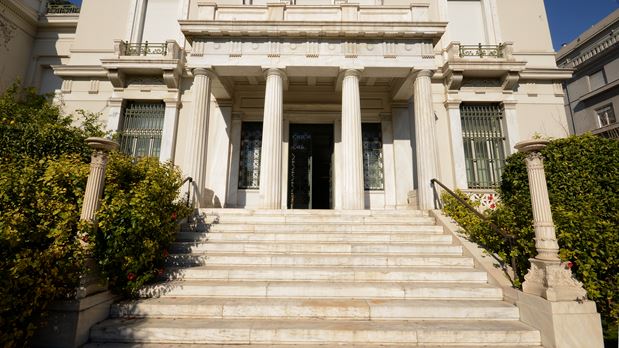Activities - Attractions in Kyllini
Those of you who visit Kyllini have the opportunity to make a unique trip to a "mosaic" of historical and cultural heritage, which is imprinted in every part of the area.
In Kyllini you have the opportunity to visit a variety of particularly important, historical, archaeological, religious and nature attractions. The most important attraction is the Castle of Chlemoutsi, which has been declared a UNESCO cultural heritage monument and will soon host a collection of Knights in Greece in a model museum.
Sights
Castle Chlemoutsi
Chlemoutsi is located in Kyllini Castle high on top of the Hellenic Hill, Chlemoutsi is an example of a fortification technique and was implemented during its peak period due to the pioneering defense techniques applied.
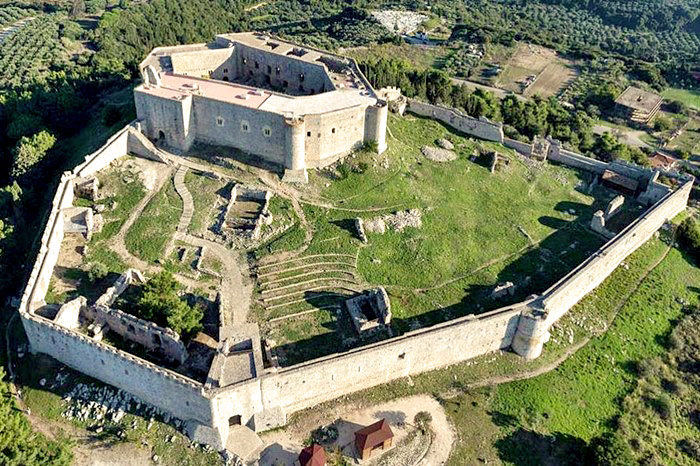
Kyllini baths
Kyllini Baths have been famous since antiquity for their therapeutic sources and visited by thousands of holidaymakers each year to treat various diseases. Their healing waters, fumes and mud heal arthritis, asthma and other skin diseases. During your visit you can see the ruins of Roman baths. In the bath area one can combine holidays with rejuvenation and treatment.

Vlacherna Monastery
The Women's Byzantine Monastery of Our Lady of Vlacherna is built on a large vegetation location and is 2 km from down Panagia. Its cathedral is a three -aisled basilica with an extermination, an incarnate, a pronao and mainly a temple. The monastery, from its architecture, appears to be built in the Byzantine era (around the end of the 12th century) and was completed by the Franks. The interior has remarkable frescoes and the beautiful image of Our Lady of Vlacherna. On September 8, he celebrates, dedicated to the Birthday of Theotokos.

Lighthouse - island of Kafkalida
The small island is a few minutes from the port of Kyllini and one can access a boat from the coast, there are Roman tombs on the small island and the ruins of an Early Christian temple. The lighthouse on the island of Kafkalida was built in 1906 with a height of a tower of 15 meters.
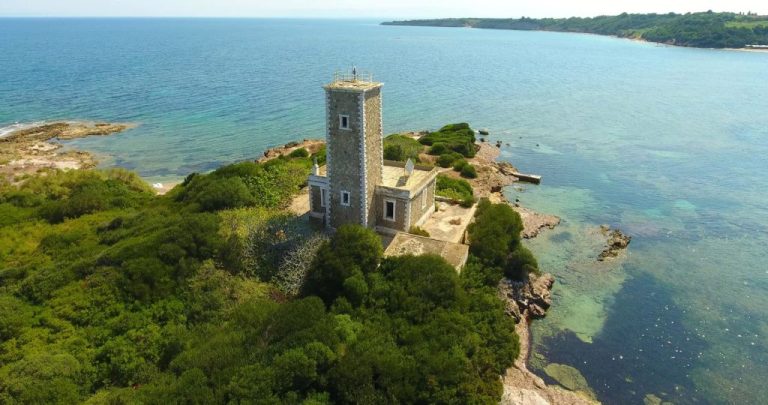
Ancient Olympia: The birthplace of the Olympic Games
A trip to the sacred area of Olympia, the place where the Olympics were born and held in antiquity, is the best. This place that was claimed to become the most important spiritual, religious and sports center in antiquity and was chosen for a sacred purpose: to perform the Olympic Games.
Ancient Olympia is one of the most important archaeological sites in the world. Its magic unfolds between Alfios and the Cladeos River, just below the cruise mountain.
From Pyrgos, the capital of the prefecture of Ilia, it is divided a few kilometers of road. The feeling that space causes you is always the same: awe and respect for a place so special.
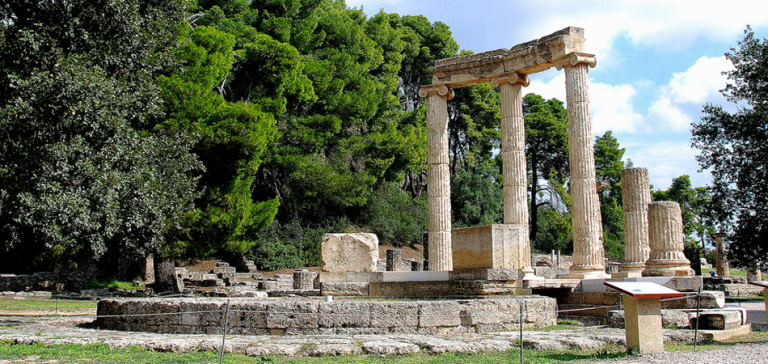
Activities - Attractions in Athens
A city like Athens offers its visitors a wealth of activities and experiences that will make your stay even more special. Fill your time creatively Rest Sleep Repeat 1 & 2 in downtown Athens near the National Archaeological Museum provides you with easy access to all points you want.
Rest Sleep Repeat 1 & 2 will form the basis for your beautiful wandering in Athens, enabling you to enjoy every day of your holiday. Don't miss the opportunity to visit all the great sights of the city that will impress you with their imposing beauty, culminating in the Acropolis and its new museum, which remains unchanged over the centuries.
At the same time, excursions organized in places such as Delphi, Sounio, Epidaurus and Mycenae will introduce you to the ancient history of Greece and fill you with unique emotions that you will carry with you for a long time.
Activities
- Tour in sights of Athens and Piraeus by tourist bus
- Tour in city sights and excursion to Sounio
- Excursion to Sounio and the Temple of Poseidon
- Night tour of Athens, accompanied by a Greek dinner
- Tour of the Acropolis
- Tour of the new Acropolis Museum
- Day trip to Mycenae and Epidaurus
- Wine tasting and day trip to ancient Corinth
- Day trip to Delphi
- Daily cruise to Hydra, Poros and Aegina
Acropolis
The sacred rock of the Acropolis, a symbol of Athens, dominates the center of the modern city and is visible from every corner. UNESCO World Heritage Site, inhabited by prehistoric times and gradually shaped in the predominantly sacred area of Athens, dedicated mainly to its protector, goddess Athena. At the top is the Parthenon, the top creation of classical architecture, the Propylaea, the Erechtheion and the Temple of Athena Niki. On the slopes of the rock there are caves, sanctuaries and monuments of various times, most famously the ancient theater of Dionysus, and the Roman Conservatory of Herod Atticus.

Acropolis Museum
The Acropolis Museum, one of the most important in the world, includes unique masterpieces, mainly original works of archaic and classical Greek art, directly linked to the sacred rock of the Acropolis. The visitor can see closely reference works, such as the Erechtheion Caryatids and the Sculpture of the Parthenon. The incorporation of its frieze into the core of the museum, the placement of metrops between the columns, the development of the forms of the two pediments of the temple, and the unification of original sculptures with those copies of those in foreign museums (British, Louvre), gives the possibility of the first time of a comprehensive view of the Parthenon sculpture decoration.

National Archaeological Museum
Greece's largest museum and one of the most important in the world, includes more than 20,000 masterpieces, composing a comprehensive picture of ancient Greek culture, from prehistory to late antiquity. It has, among other things, the rare collection of prehistoric antiquities with the impressive findings of the royal tombs of Mycenae, one of the most important collections of sculptures in the world, vases, micro -arts, and the only collection of Egyptian and Eastern antiquities in Greece. It is housed in the impressive 19th -century neoclassical building, a work by architects L. Lange and E. Ziller, on Patision Street.

Herod Conservatory of Attica
One of the few ancient theaters in the world that still host performances is the impressive Roman Conservatory of Herod Atticus. It is locked on the southwestern slope of the Acropolis, on the pedestrian street of Dionysios Areopagitou. It was built in 161 a.D at the expense of the Athenian orator Herod of Atticus. In its original form there was a covered building with a wooden roof. Restored by acquiring its current form in the '50s. Since 1957 it has been hosting performances by the Athens Festival. Herodion has appeared among others Maria Callas, Frank Sinatra, Liza Minnelli, Luciano Pavarotti, Manos Hadjidakis and Sylvie Guillem.
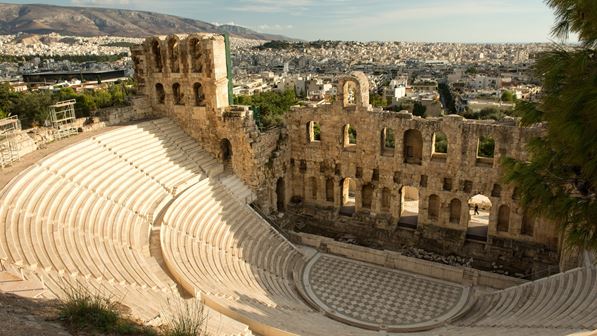
Temple of Poseidon
The sanctuary of Neptune in Cape Sounion is one of the most important of Attica and undoubtedly one of the most beautiful archaeological sites in the country. From here the ancient Greeks could control the sea pass to Athens and Piraeus. Inside the fortress of Akrotiri, the Temple of Poseidon stands at its highest point and is visible from many miles away from the sea. Made in the 5th century. e.g. From a local marble, the Doric temple occupies an area of about 5 acres and causes awe the visitor especially in the evening under the light of the full moon.

Visit to Attica Zoological Park
In Spata Attica is one of the largest zoos in the Balkans. It hosts the largest collection of birds in the world, many reptiles, rare animals in Greece and Africa, all in specially designed spaces that copy their natural environment. Visit the place where monkeys are free, as well as the dolphin park. The park is open daily from morning to sunset.

Lycabettus
The hill was a rock carrying the goddess Athena in her hands and fell to Athens when she heard the bad news that carried her a crow. At the top of Lycabettus, adorned with the chapel of St. George, you will see the whole basin and if the weather is good even the Saronic Gulf. To get there you have to choose between the cable car or the lush paths. At the foot of the rock is the small chapel of Agioi Isidore.
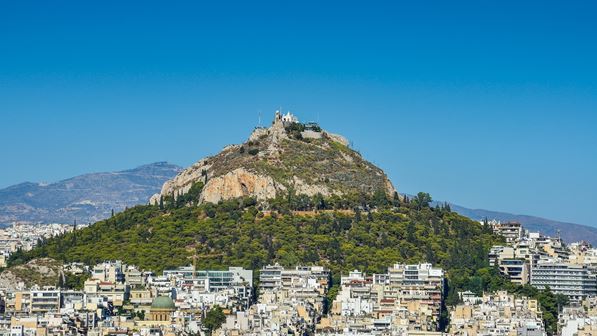
Ancient Market of Athens
The ancient market, northwest of the Acropolis, was the center of the city of classical and Hellenistic times. It was erected the most important public buildings and sanctuaries and developed intense administrative, political, judicial, commercial, social and religious activity. The main monuments of the site are the Stoa of Attalos, which today houses the Museum of Ancient Market, the Temple of Hephaestus, the Dome and the Parliament. It is noteworthy that in order to reveal the monuments to demolish more than 400 newer buildings.
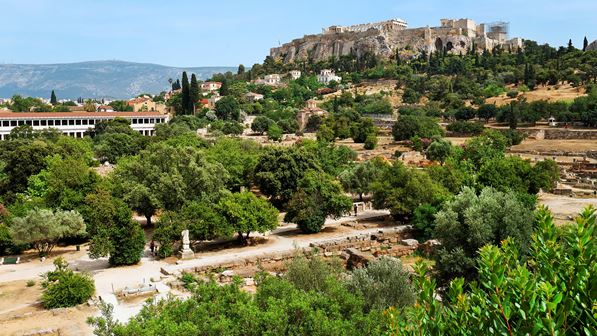
Benaki Museum
The Benaki Museum was founded in 1931 by Antonios Benaki, the son of a large Greek family, and is the oldest private museum organization in Greece, with exhibits covering more than one cultural sectors. The central neoclassical mansion of the Museum, opposite the National Garden, exhibits collections that record the character of the Greek world from antiquity to the 20th century, offering a wonderful overview of Greek culture from antiquity to modern times.
